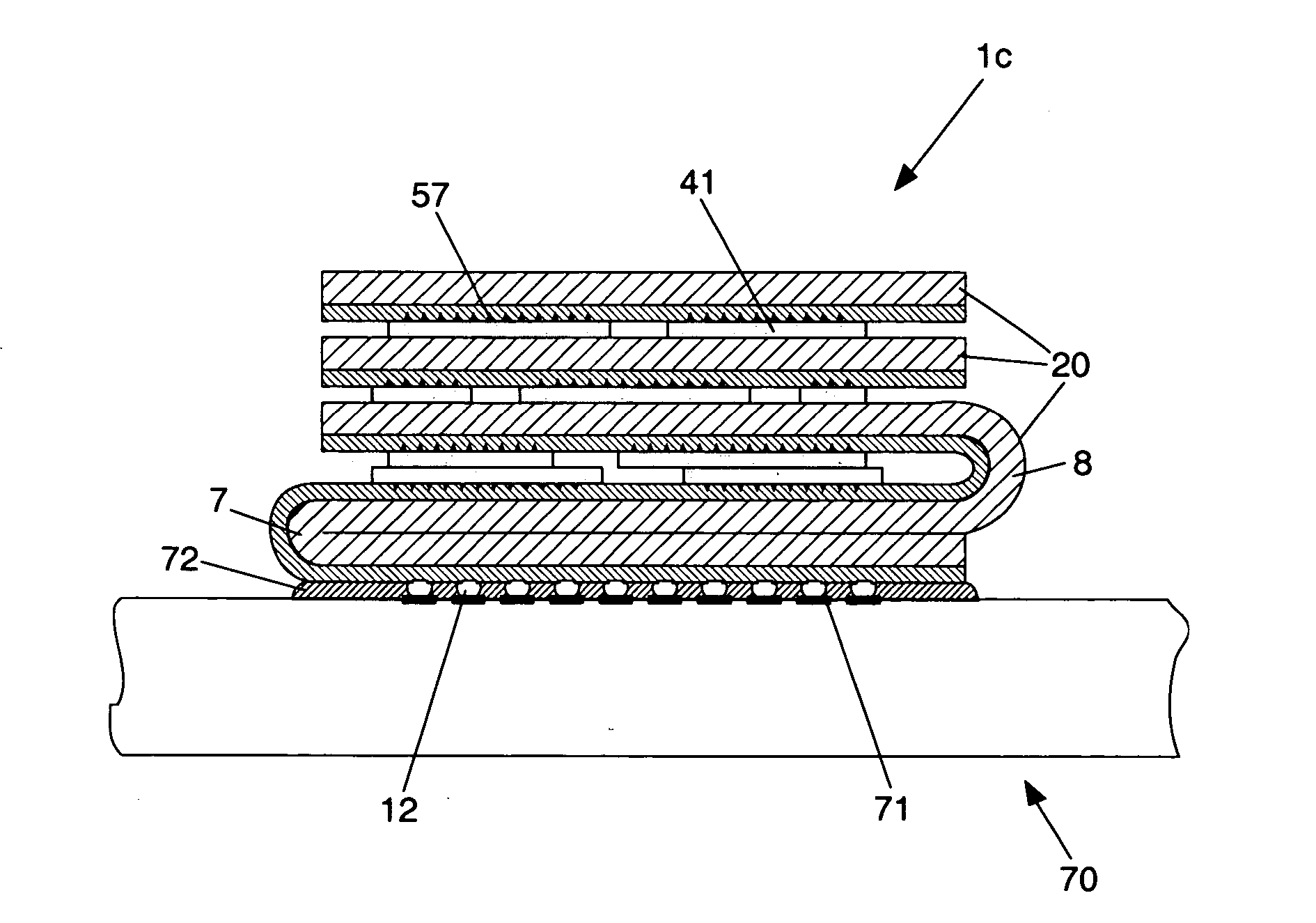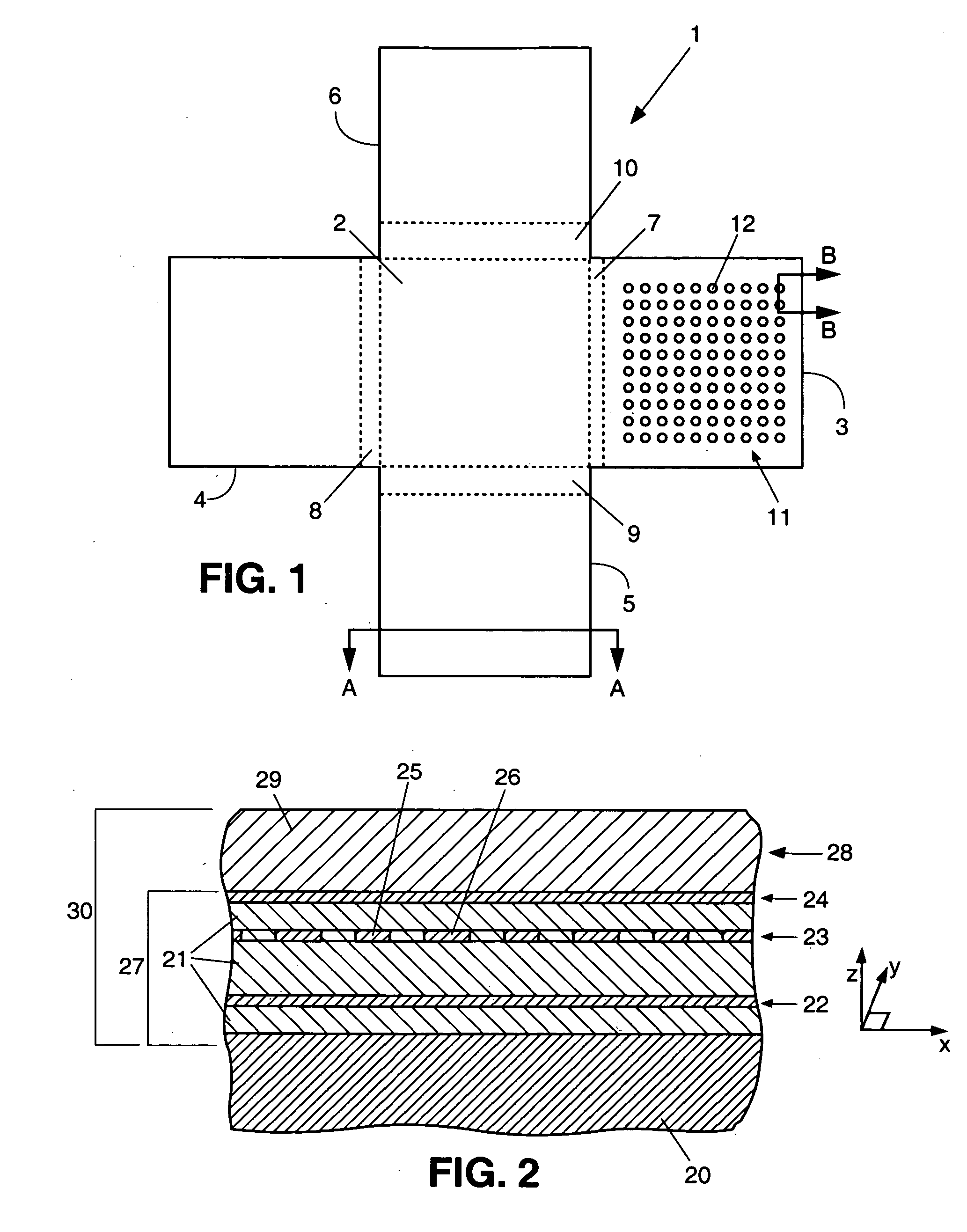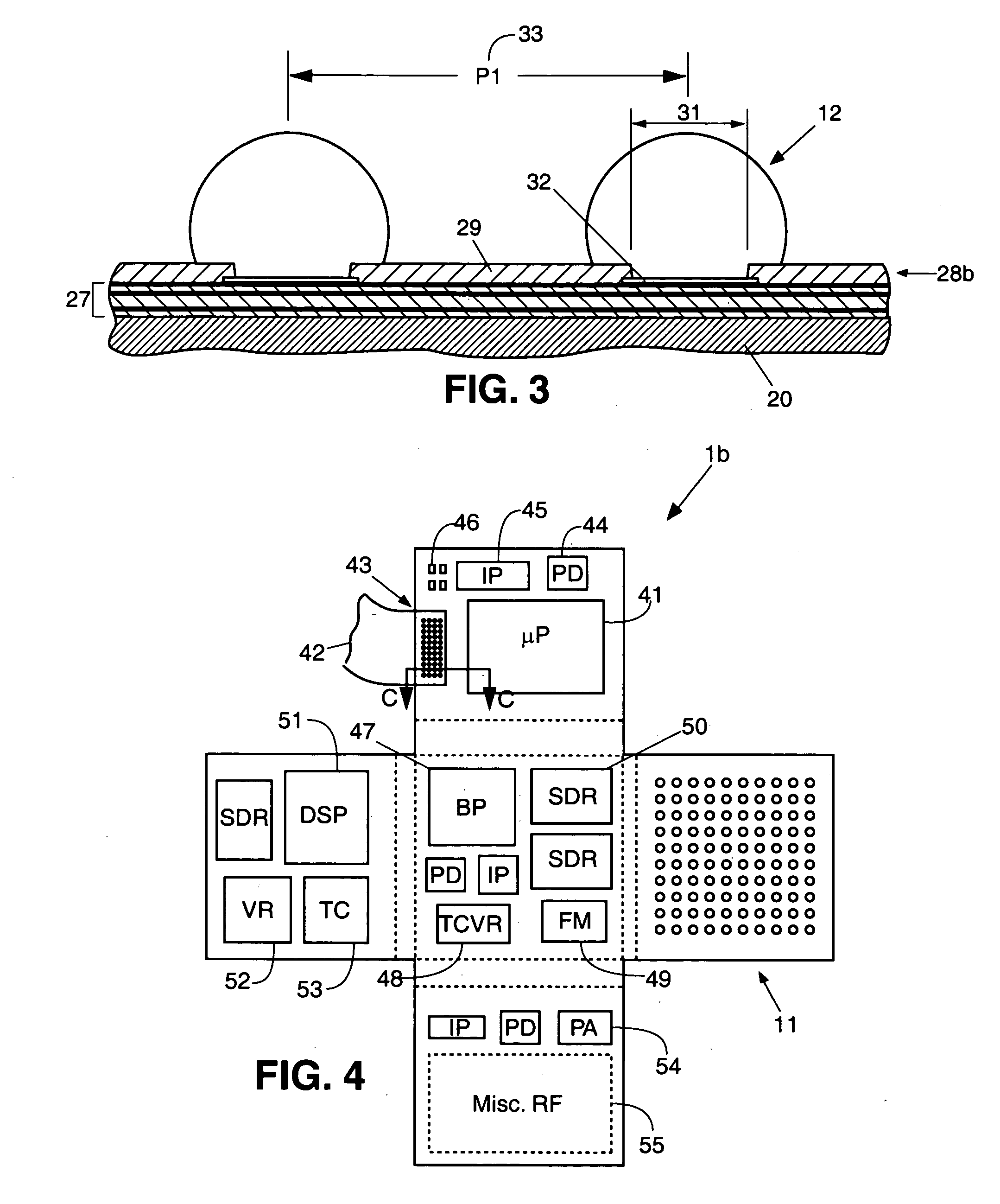System in package
a technology of system and package, applied in the field of system in package, can solve the problems of poor methods of testing the completed assembly, poor methods of die replacement, and existing stacked die package and system in package approaches, and achieve the effects of effective cooling of sip, high density, and high speed
- Summary
- Abstract
- Description
- Claims
- Application Information
AI Technical Summary
Benefits of technology
Problems solved by technology
Method used
Image
Examples
Embodiment Construction
[0063]FIG. 1 is a top view of a foldable circuit board 1 of the current invention with five delineated surfaces including a center surface 2 and four tab-like surfaces 3-6 arranged around it. Rectangular areas 7-10 are reserved for hinges in the folded assembly. The first tab folded 3 will require a small hinge area 7 and the last tab folded 6 will require a larger hinge area 10 because the total thickness of the stacked layers (folded surfaces) increases with each additional folded surface. Tab surface 3 includes an array 11 of bump terminals 12 for connection to a printed circuit board, including provisions for signals and / or power. The array 11 of bumps 12 is one form of attachment site, in this case for attaching the SIP to a circuit board.
[0064]FIG. 2 illustrates a fragment of cross-section AA of FIG. 1, expanded to show a preferred layer structure. A substrate of conductive material 20, preferably copper or an alloy of copper supports multiple conductive and dielectric layers...
PUM
 Login to View More
Login to View More Abstract
Description
Claims
Application Information
 Login to View More
Login to View More - R&D
- Intellectual Property
- Life Sciences
- Materials
- Tech Scout
- Unparalleled Data Quality
- Higher Quality Content
- 60% Fewer Hallucinations
Browse by: Latest US Patents, China's latest patents, Technical Efficacy Thesaurus, Application Domain, Technology Topic, Popular Technical Reports.
© 2025 PatSnap. All rights reserved.Legal|Privacy policy|Modern Slavery Act Transparency Statement|Sitemap|About US| Contact US: help@patsnap.com



